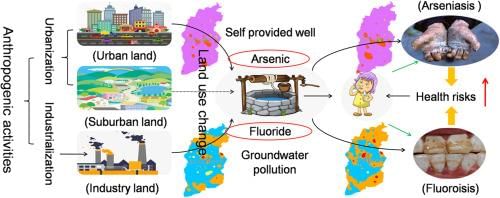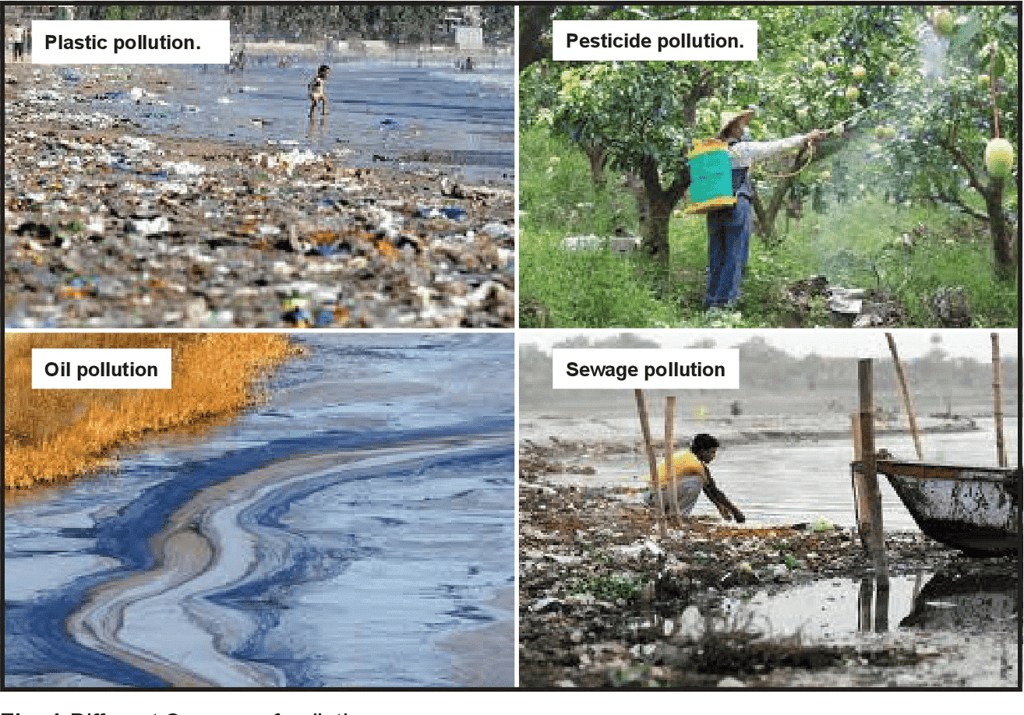Anthropogenic Activities - People, Development and Environment Notes
What are the Anthropogenic Activities?
Anthropogenic activities refer to the actions and processes that are derived from human activity, which have a significant impact on the environment. These activities range from industrialization, deforestation, and urbanization to agriculture, mining, transportation, and energy production.
 Key Characteristics
Key Characteristics
- Human-Centered: Anthropogenic activities are inherently human-driven, meaning they are initiated and controlled by human actions.
- Environmental Impact: These activities often lead to environmental degradation, affecting air, water, and soil quality, and contributing to climate change and loss of biodiversity.
- Economic and Social Dimensions: While they are primarily aimed at enhancing human welfare and economic growth, they also bring about social and economic challenges, such as health issues, displacement of communities, and inequality.
- Any human practices that have the potential to impact the environment locally as well as globally are considered as Anthropogenic Activities. The present era on earth is known as the Anthropocene Age because now humans are directing the environmental changes on Earth.
- Fossil Fuels, Mineral, Timber, Agriculture, Recreational, etc. are the natural resources used by society, and the pieces of these natural resources converted into carbon dioxide in the atmosphere which creates the pollution which is named Anthropogenic.
[Intext Question]
Impact of Anthropogenic Activities on Environment
- The versatile affiliation of human civilization with nature, whose properties will in a change in space (topographically) and in time (evolutionally), opens man to fluctuated ecological impacts.
- According to Fox News, Volcano emissions released during ancient mass extinction offer us a warning, scientists said,- “Our estimates suggest that the amount of CO2 that each CAMP magmatic pulse injected into the end-Triassic atmosphere is comparable to the number of anthropogenic emissions projected for the 21st century.”
Human Force on Ecosystem Process
The activities of humans in the environment make changes in many of the natural processes in a harmful fusion. A portion of these natural procedures and short portrayal of human impact on these procedures appear in the table beneath.
 |
Download the notes
Notes: Anthropogenic Activities
|
Download as PDF |
Deleterious Human Activities on Environment
Humans are part of Earth's Ecosystem; human activities can either voluntarily or unwittingly alter the balance of an ecosystem. The stability of the planet will imbalance because of these habit of destruction in the human, whether accidentally or intentionally.
If these human influences are not addressed, the balance of numerous biological systems might be irreversibly influenced. Some of the ways that humans pollute and devastate ecosystems are indicated in the points mentioned below-
- Population Growth- The increasing number of the population is using excessive of the limited resources on the Earth.
- Over Consumption- As compare to the emerging countries, the Industrialized countries are using more resources per person from our planet.
- Advance Technologies- We often introduce technology outwardly, knowing how it will affect the environment.
- Pollution- Land, Air, Water, and Nuclear Pollution has had numerous antagonistic impacts on biological systems.
- Changes in the Atmosphere- These incorporate the expansion of Greenhouse gases for the most part because of the consumption of non-renewable energy sources and the depletion of our stratospheric ozone layer. Other pollutants also have adverse impacts on living things.
Environmental Changes
- As the uncontrollable utilization of natural resources is affecting the continuous air and water pollution.
- The environmental changes bring humanity in some areas to achieve or near fatigue of natural resources necessary for rendering and thus threatening all life on the globe, including human beings itself.
- It broadly expresses that it is a "Worldwide Disaster" more challenging than any other social or political problem. It invites for severity measures to abridge a request, in the specific through contraception, and moderate technological advancement, just as to set up worldwide oversight of the utilization of regular assets.
- There is a long history of the international "Environmental Movement" without any sharp beginning. It is the heir to the great excursions of invention and journey that made people knowledgeable of the system and the multifariousness of land and waters, rocks, trees, flora, fauna, and societies.
[Intext Question]
Impact of Environment in Progress of Civilization
- New information illuminates the degree of prehistoric man's dependency on nature also, on the kind of changes in man's condition at the beginning of human advancement.

- But, the Archaeological hollows across the prior several decades have devised a multitude of new inventions that have, to a great extent, enlarged scientific theories of the historical backdrop of a crude society. During the uppermost Palaeolithic primitive man could make the fire outwardly any trouble and use it for cooking and heating in the cold days.
- The need for the fire was conventional to such an extent that even in ages when the principle wellspring of fire disappeared in places dwelled by primitive men, they would utilize Hines of enormous warm-blooded animals as fuel.
- The factors of nature enabling a primitive society, a primitive tribe to cultivate crops, and to breed cattle, a combination of crop farming with animal husbandry, proved more effective.
Anthropogenic Impact in the Sea and Marine Pollution
The nature of extreme diversity and the mosaic of the Anthropogenic creates an impact on the Hydrosphere. It includes multifactorial phenomena likely-- changes in temperature management and radioactive atmosphere
- releases of harmful effluents and inflow of supplements
- Irreparable water utilization and waste of water life forms during seismic studies
- arriving of business species and their development
- the annihilation of the shoreline and construction of drilling apparatuses
The results of the effect of elements can surpass the unimportant aggregate of the impacts brought about by each factor independently. However, the impact of a few items can cause synergetic consequences. Such circumstances are very conceivable, for instance, when radioactive, compound and warm results are consolidated.
The impact of Anthropogenic on the water environment must be interpreted as a cumulative demonstration of a wide range of human action which causes-
- transparent or potentially shrouded aggravations in the regular structure and elements of water biotic interfaces
- dwindling their piscaries and recreational value
- other negative impacts of biological, industrial, or socioeconomic behavior
The above term is based on the theory of a multifactorial environment of the anthropogenic influence on the Hydrosphere, which results in anatomical and practical acknowledgments of the water ecosystems and biota.
|
25 videos|25 docs|8 tests
|
FAQs on Anthropogenic Activities - People, Development and Environment Notes
| 1. What are some examples of anthropogenic activities that contribute to environmental degradation? |  |
| 2. How do anthropogenic activities impact biodiversity and ecosystems? |  |
| 3. What are the consequences of anthropogenic activities on climate change? |  |
| 4. How can we mitigate the negative effects of anthropogenic activities on the environment? |  |
| 5. What role do individuals and governments play in addressing anthropogenic activities? |  |





















